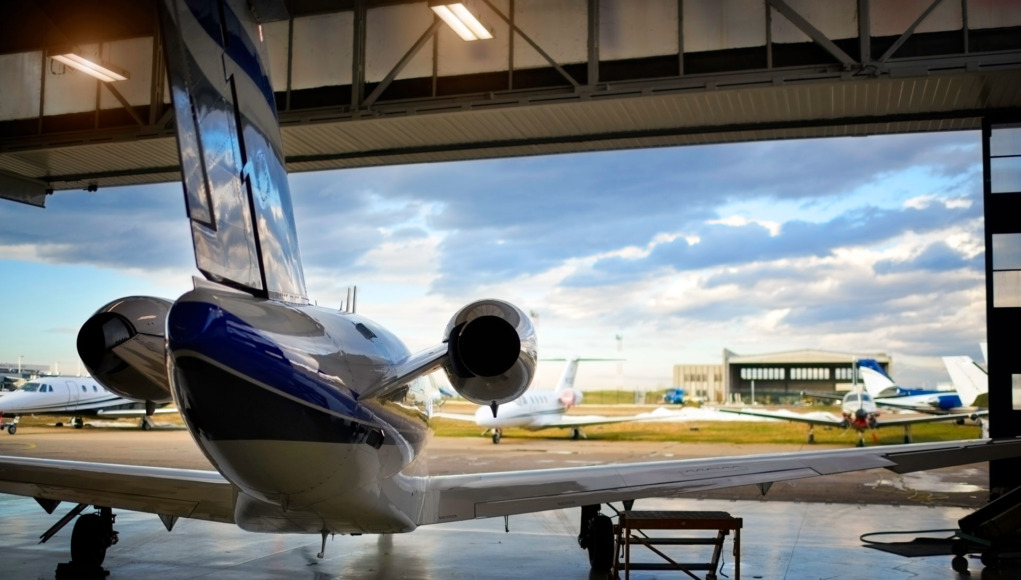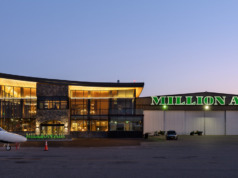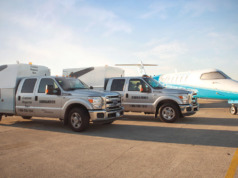Business jets provide significant tangible and intangible benefits – and with an uncertain global economic outlook and unclear trajectory of Covid-19, they are more useful and valuable than ever before. So, if you are buying your first aircraft, as you engage a team of aviation professionals with expertise in aircraft sales, insurance, tax, and legal matters, you also need to consider where your aircraft is going to live.
You have two choices: will the aircraft remain outside on the tie-down ramp, or will you lease hangar space? It’s prudent to conduct a cost/benefit analysis to determine the impact on your fixed operating costs, as well as on the residual value of the aircraft. That should lead you to the option best for you. Or will it?
For example, while storage outside versus in a hangar may not raise your hull insurance costs, the exposure will result in wear-and-tear on aircraft paint and “bright work” (i.e. wing and empennage aluminum leading edges), lowering the aircraft’s residual/resale value by mid-six figures or more.
Finding hangar space at your desired airport involves lists and luck. You start with your local airport and get put on a waiting list. Then you call the local FBOs, and maybe one of their tenants recently sold their airplane or will not be renewing their lease. Bingo! But what do you do if the available hangar has a door height of 24 feet and your aircraft’s tail height is 28 feet?
The current robust demand for preowned aircraft and the latest statistics reflect a scarcity of preowned jet inventory, as an influx of first-time buyers entered the marketplace and completed purchases in 2021. Buyers want to maintain their ability to travel and place a high value on mobility as they capitalized on the flexibility to work from any location they desire.
The surge in aircraft demand means that new and modern hangar facilities may be hard to find and the decision to tie down or hangar already may be made for you. New aircraft designs include higher tails and winglets to increase the range and efficiency of the aircraft, but they also require more space on the ramp and in the hangar, essentially making many older or current hangars obsolete. In 2010, the average jet footprint was 3,205 square feet; whereas by 2020, the size had increased to 3,678 square feet, according to the business aviation research company JetNet.
Gone are the days when an FBO could stack aircraft to maximize utilization and rent would be calculated based on a minimum monthly or annual fuel purchase. They may have even thrown in office space to seal the deal. Today, hangar space and rents are at a premium, especially in growth cities in states like Texas, Tennessee, and Florida, where aircraft owners are moving to take advantage of lower taxes. In these growth markets, demand is soaring for new hangar space which often includes a large office, departure lounge, kitchen, passenger parking, and the ability to limit access to aircraft.
According to the Airports Council International, airports have been unable to fund growth projects that would modernize facilities and add new general aviation hangars. The proposed Infrastructure Bill in Congress has $25 billion earmarked for future airport infrastructure development, but it could take years to meet the current demand.
To fill the void, private companies are now building ample new premium hangar space in growth cities across the country, featuring amenities for safety, security, and comfort.
Securing your new aircraft’s home-base requires just as much preparation and research as its purchase. Synchronizing the delivery of your aircraft and securing hangar space requires a network of professionals working towards finding that space long before the ferry flight to its new home. BAA
Millie Hernandez-Becker is President/CEO of SkyQueen Realty. She procures hangar space for corporate flight departments and individuals, and consults on airport land leases and infrastructure development. She serves on NATA’s Airports Committee.





